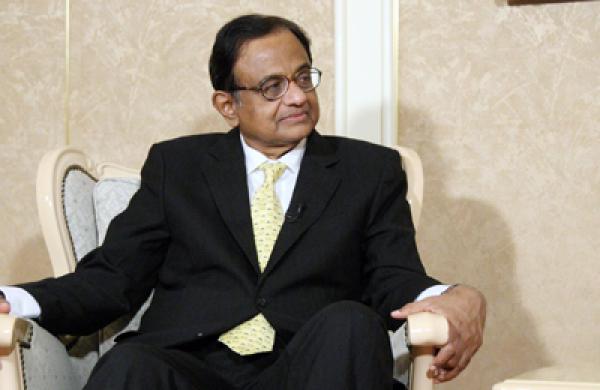To judge the Indian mutual fund industry by assets under management, the most recent fiscal year was not a good one. Although the Indian economy grew by 8.5 percent in the 12 months ended March 31 and the benchmark Bombay Stock Exchange’s sensitive index, or Sensex, rose 11 percent in that period, the fund industry’s average assets declined by 6.3 percent.
You wouldn’t know business was down by talking to industry executives, though. Retail investors, who had drifted away in recent years, seem to be taking mutual funds a little more seriously as an investment option. In addition, fund managers are coming to grips with a series of regulatory changes in recent years designed to get the industry to focus more on investment performance than on razzle-dazzle marketing. These developments have injected a healthy dose of optimism into an industry that a year ago was awash in gloom.
Reliance Capital Asset Management Co. illustrates these recent trends. The firm retains its position atop the India 20, Institutional Investor’s annual ranking of the largest Indian fund managers, even though its assets declined by 7.8 percent in the 12 months ended March 31, to $22.6 billion. The decline is, in part, intentional. Reliance has deemphasized its fixed-income funds recently because the business serves mainly as a channel for corporate liquidity and has low margins. Fixed-income funds represent about 60 percent of the industry’s assets, and fully half of the investment in those funds comes from just 70 Indian companies, according to industry executives. By contrast, Reliance has placed a higher priority on selling equity mutual funds to retail clients, says Chief Executive Sundeep Sikka. The firm conducts as many as 400 training programs a month for small investors and has introduced telephone- and mobile-based fund transactions. “We wanted to achieve a healthier mix between corporate and retail investors,” he says.
Reliance is far from alone. The industry, at large, is stepping up its efforts to draw in retail investors. The Association of Mutual Funds in India, or AMFI, the trade body of money managers, is spreading the gospel of mutual funds. Working in cooperation with fund management firms, AMFI conducted 5,000 investor awareness programs in the latest fiscal year that attracted 300,000 potential investors in 280 cities and towns across India. In September, AMFI launched a television advertising campaign to promote regular investments in mutual funds. Individual firms are chipping in with efforts of their own. “We have created proprietary software and short films, and are partnering with better quality distributors to educate investors,” says Naval Bir Kumar, president and CEO of IDFC Asset Management Co. The firm rises one place, to No. 11, in the India 20, thanks to an 8.2 percent rise in assets in the latest year, to $4.7 billion.
Firms that were able to grow their assets in the challenging market environment of the past year manage to climb in the India 20. HDFC Asset Management Co. rises two places, to No. 2, owing to a 9.9 percent increase in assets. ICICI Prudential Asset Management Co. slips one place, to third, after seeing its assets decline by 9.9 percent; and UTI Asset Management Co. falls one notch, to fourth, after a 14 percent drop in assets. Birla Sun Life Asset Management Co. maintains its position in fifth place but closes the gap with its larger competitors. The firm’s assets grew by 18.4 percent in the latest year, to $14 billion. “We kept our focus on building scale, and there was good asset addition in some of our funds,” says A. Balasubramanian, the firm’s CEO.
Elsewhere on the list, LIC Nomura Mutual Fund Asset Management Co. stages a notable decline, falling eight places, to No. 14. The firm is predominantly a debt house and saw a big drop in assets in its money market and short-term debt funds.
Industry assets overall dropped to an average of 7.0 trillion rupees ($140 billion) in the January–March quarter this year from 7.5 trillion rupees in March 2010, according to AMFI data.
For years, India’s fund industry had grown rapidly through new fund launches, many of them little different from existing products. New funds have appealed to Indian investors, who tended to prefer funds priced at par, and they were pushed aggressively by distributors, which earned commissions of as much as 5 percent from entry load fees.
Concerned that the industry had been churning investors from product to product to generate fees rather than concentrating on investment performance, the Securities and Exchange Board of India, or SEBI, has made a number of regulatory changes over the past three years. The regulator first reduced entry load fees, then banned them altogether in 2009. Fund managers now have to pay distributors’ fees out of their own pockets or sell through financial advisers, which charge investors directly for their services. With the changes, SEBI aimed to foster greater transparency on fees and encourage long-term investment.
The reforms have had a major impact on fund companies and distributors, mostly independent outfits, and helped cool off the mutual fund boom. “Besides the new SEBI regulations, the end of the bull market has also had an impact on asset growth for the industry,” says IDFC’s Kumar.
Lately, however, fund firms appear to have adjusted to the new regime and begun to generate renewed growth from retail investors. “The metamorphosis in the mutual fund industry, post-game-changing regulations, appears to be complete,” Hoshang Noshirwan Sinor, chief executive of industry body AMFI, wrote in his quarterly letter in December 2010. “There are still many issues yet to be sorted out, but as we go along, we are sure, the industry will once again move into the growth trajectory.”
Executives say the industry is coming to terms with the new regulatory framework. “Financial advisers are already altering their business models in the new regulatory structure,” says Harshendu Bindal, president of Franklin Templeton Asset Management (India), which rises one place in the India 20, to No. 7, having boosted its assets by 17 percent in the latest year. “Some who have a clearly distinguished or value-added service are being able to charge clients.” Fees typically range from 15,000 rupees to 20,000 rupees ($300 to $400) a year, executives say.
For fund sales through distributors, fund managers today are paying commissions of about 0.5 percent on equity and balanced funds. Firms also pay distributors a so-called trail commission of 0.5 to 0.75 percent of assets a year for continuing business from their customers. According to executives, the fee changes have prompted some smaller distributors to close or be consolidated by larger outfits.
The regulatory changes are having a salutary effect, says Dhirendra Kumar, CEO of Value Research India, a fund research firm. The moves have increased investor awareness and have channeled growth to funds with a track record of good performance rather than those that benefit from a distributor’s hard sell, he says. “The move to woo the retail investor is a step in the right direction,” says Kumar. “The problems in the industry have been fixed. The business has become more honest.”
At the end of March, there were 78 mutual funds with more than 20 billion rupees in assets, up from 53 such funds a year earlier, according to Value Research. Among equity and hybrid funds, which invest in equities and bonds, 32 large funds managed to grow their assets by 20 percent, collectively, in the most recent year, even though overall industry assets were flat during the period.
One of the biggest growth areas is systematic investment plans, under which investors make regular monthly contributions to mutual funds. The arrangements offer simplicity to investors — rupee-cost averaging, if you will — and a steady stream of inflows to fund managers. Such plans are currently reaping about 18 billion rupees a month, compared with just 5 billion rupees a year ago, says Kumar. Reliance has more than one quarter of this market, bringing in 5 billion rupees a month from 2.1 million investors, says CEO Sikka.
The fund industry has made some headway in selling debt funds, especially fixed maturity plans, closed-end debt funds with tenors of one year to three years. These plans typically offer better posttax returns than other types of fixed-income investment. Assets in this category grew 180 percent over the previous year, to 1.1 trillion rupees, in March 2011, according to Value Research. “We have seen very good traction in retail debt assets, and many of these investors will buy equity funds too in future,” says Vikaas Sachdeva, CEO of Edelweiss Asset Management Co., a quant house with about $40 million in assets in March.
Money managers are looking at other potential growth areas. Several are pushing ahead with managed portfolios, a big-ticket investment tailored for high-net-worth individuals.
Industry executives also hope to generate even more business overseas thanks to the latest regulatory change. In August 2011 the regulatory agency SEBI allowed qualified foreign investors, including retail investors, to invest directly in Indian mutual funds for the first time. The agency set an initial QFI ceiling of $10 billion for equity funds and $3 billion for debt funds.
No fund firms have announced plans to target this market yet, but industry executives are clearly excited by the potential. “Indian mutual funds have a history of outperforming the benchmarks over the long term, which should interest foreign investors,” says Birla Sun Life’s Balasubramanian. Reliance’s Sikka shares the enthusiasm. “We have seen a lot of interest in India from overseas, and the QFI route will give them an avenue to invest,” he says.
Other regulatory changes are also rippling through the industry. In October 2010, SEBI made it easier for fund management firms to merge similar funds, a natural follow-up to its earlier efforts to discourage fund proliferation by clamping down on fees. Since then firms have merged 42 funds, with JM Financial Asset Management combining its Large Cap and Equity funds, for instance. (JM slips three places, to No. 19, on this year’s list.)
The regulator has also taken steps to encourage the sale of mutual funds through the electronic platform of the Bombay and National stock exchanges. The exchanges have some 200,000 terminals in 1,500 cities and towns across the country. SEBI first allowed funds to be distributed over that network at the end of 2009, and in November 2010 it allowed the sale of funds in electronic form and enabled mutual fund transactions to be cleared through the exchange’s clearing system. “While mutual fund volumes have been small so far on the stock exchange, there is some growth on a quarter-on-quarter basis, which is encouraging,” says Edelweiss’s Sachdeva.
Regardless of the challenges of today’s market environment, India’s potential continues to attract new fund managers. In June, Union KBC Asset Management Co., a joint venture between Union Bank of India and Belgium’s KBC Asset Management, started business; it manages 8.7 billion rupees in two funds. In July, Goldman Sachs Group acquired Benchmark Asset Management Co., a specialized index fund house that ranked 27th, with 34 billion rupees in domestic assets, in the January–March quarter of this year, according to AMFI. The U.S. firm now manages the money through its local fund management unit, Goldman Sachs Asset Management (India).
Elsewhere, BNP Paribas adjusted its holdings following its purchase of Belgian bank Fortis, which temporarily left it owning stakes in two different fund companies, something that Indian regulators don’t permit. The bank sold its stake in Sundaram BNP Paribas Asset Management Co. to joint venture partner Sundaram Finance in October 2010 for 1.4 billion rupees. The renamed Sundaram Asset Management Co. rises one place in this year’s India 20, to No. 12. The French bank renamed its newly acquired Fortis Investment Management (I) business as BNP Paribas Asset Management India; it had 46.7 billion rupees in assets at the end of March. • •






